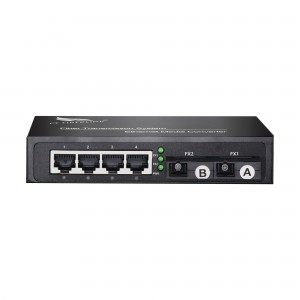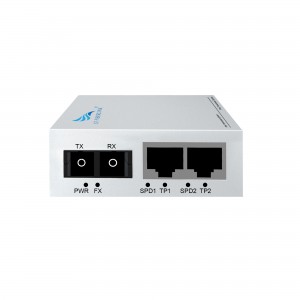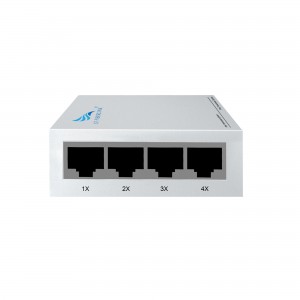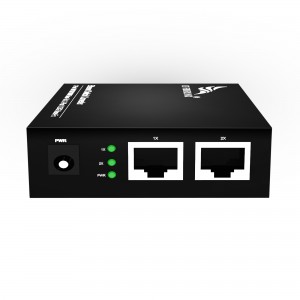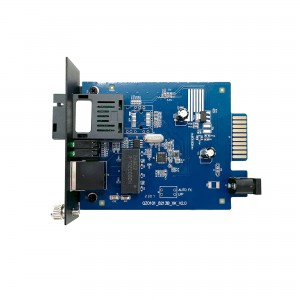10-port 10/100/1000M Media Converter (multi-mode Dual-fiber SC)
10-port 10/100/1000M Media Converter (multi-mode Dual-fiber SC)
Product Features:
Let me introduce to you the cutting-edge product brought to you by Huizhou Changfei Optoelectronics Technology Co., Ltd. – Gigabit 8 optical 2 electrical multi-mode dual fiber. As an innovative high-tech enterprise, YOFC focuses on various communication equipment and network products. We specialize in 5G communications, fiber optic transceivers and network switches, providing you with versatile and reliable solutions for all your networking needs.
Gigabit 8 optical 2 electrical multi-mode dual fiber is an industrial optical fiber converter that integrates the functions of optical fiber to Ethernet switch and optical transceiver switch. This powerful device enables seamless and efficient connectivity between different network media, making it ideal for industries such as transportation, manufacturing and energy.
One of the outstanding features of this product is its IP30 degree of protection, which ensures durability and reliability even in harsh environments. With this level of protection, the converters can withstand dust, vibration and temperature fluctuations, making them suitable for deployment in a variety of industrial environments.
For the convenience of installation and use, Gigabit 8 optical 2 electrical multi-mode dual fiber is equipped with a 4-digit dial code, which can be connected to an external power supply. Just by entering a code, users can easily turn the device on or off. This streamlined process saves time and minimizes errors during installation and maintenance.
In addition, the converter features an SC interface for reliable, high-speed data transmission via fiber optics. Through the SC interface, users can seamlessly connect the converter with other compatible devices to ensure smooth network data transmission.
As a trustworthy and reputable technology company, YOFC prides itself on creating high-quality products that meet industry standards. Gigabit 8 Optical 2 Electrical Multimode Dual Fiber demonstrates this promise. It has been rigorously tested to guarantee superior performance and reliability, giving our customers peace of mind that they are making the right choice.
Whether you are upgrading your existing network infrastructure or starting a new project, the Gigabit 8 Optical 2 Electrical Multimode Dual Fiber is the versatile solution for your network needs. It offers flexible and scalable connectivity options, enabling you to build a robust and efficient network that can adapt and grow with your organization.
In conclusion, Gigabit 8 Optical 2 Electrical Multimode Dual Fiber is a must-have for industries looking for a reliable and efficient network solution. Featuring an IP30 rating, 4-digit dial code for external power supply and SC interface, the converter provides a seamless and user-friendly experience. Trust the professional knowledge of YOFC and choose Gigabit 8 optical 2 electrical multi-mode dual fiber to meet your network needs.
Technical Parameter:
|
Model |
CF-8022GMW-2 | |
| Interface Characteristics | ||
|
Fixed Port |
2* 10/ 100/ 1000Base-T RJ45 port 8* 1000Base-X uplink SC fiber port |
|
|
Ethernet Port |
10/ 100/ 1000Base-T auto-sensing, full/half duplex MDI/MDI-X self-adaption |
|
|
Twisted Pair Transmission |
10BASE-T: Cat3,4,5 UTP(≤100 meter) 100BASE-T: Cat5e or later UTP(≤100 meter) 1000BASE-T : Cat5e or later UTP(≤100 meter) |
|
| Optical Port | The default optical module is multimode dual fiber 2km, SC port | |
| Wavelength/Distance | multimode: 850nm 0~550M,1310nm 0~2KM | |
| Chip Parameter | ||
| Network Protocol | IEEE802.3 10BASE-T, IEEE802.3i 10Base-T,
IEEE802.3u 100Base-TX, IEEE802.3u 100Base-FX, IEEE802.3x IEEE802.3ab 1000Base-T;IEEE802.3z 1000Base-X; |
|
|
Forwarding Mode |
Store and Forward(Full Wire Speed) |
|
|
Switching Capacity |
20Gbps |
|
|
Buffer Memory |
14.88Mpps | |
|
MAC |
2K | |
|
LED Indicator |
Fiber | F1-F8 |
| On the RJ45 seat | 1-2 Yellow:Indicate PoE | |
| 1-2 Green: Indicates network working status | ||
| Power | PWR (green) | |
| Power | ||
| Working Voltage |
AC:100-240V |
|
|
Power Consumption |
Standby<3W, Full load<10W |
|
|
Power Supply |
DC:5V/2A industrial power supply |
|
| Lightning protection &Certification | ||
| Lightning protection | Lightning protection: 4KV 8/20us, Protection level: IP30 | |
| Certification | CCC;CE mark, commercial; CE/LVD EN60950;FCC Part 15 Class B; RoHS | |
| Physical Parameter | ||
| Operation TEMP | -20~+55°C;5%~90% RH Non condensing | |
| Storage TEMP |
-40~+85°C;5%~95% RH Non condensing |
|
| Dimension (L*W*H) | 220mm* 101mm*28mm | |
| Installation | Desktop | |
Product Size:
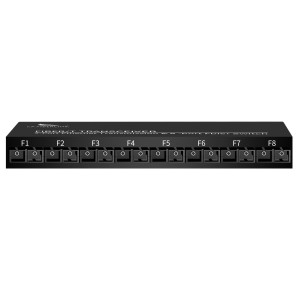
product application diagra:

How to choose a fiber optic transceiver?
Optical fiber transceivers break the 100-meter limitation of Ethernet cables in data transmission. Relying on high-performance switching chips and large-capacity caches, while truly achieving non-blocking transmission and switching performance, they also provide balanced traffic, isolation and conflict. Error detection and other functions ensure high security and stability during data transmission. Therefore, fiber optic transceiver products will still be an indispensable part of actual network construction for a long time. So, how should we choose fiber optic transceivers?
1. Port function test
Mainly test whether each port can work normally in the duplex state of 10Mbps, 100Mbps and half-duplex state. At the same time, it should be tested whether each port can automatically select the highest transmission speed and automatically match the transmission rate of other devices. This test can be included in other tests.
2. Compatibility test
It mainly tests the connection ability between the optical fiber transceiver and other devices compatible with Ethernet and Fast Ethernet (including network card, HUB, Switch, optical network card, and optical switch). The requirement must be able to support the connection of compatible products.
3. Cable connection characteristics
Test the fiber optic transceiver’s ability to support network cables. First, test the connection ability of Category 5 network cables with lengths of 100m and 10m, and test the connection ability of long Category 5 network cables (120m) of different brands. During the test, the optical port of the transceiver is required to have a connection capability of 10Mbps and a rate of 100Mbps, and the highest must be able to connect to a full-duplex 100Mbps without transmission errors. Category 3 twisted pair cables may not be tested. Subtests can be included in other tests.
4. Transmission characteristics (transmission loss rate of data packets of different lengths, transmission speed)
It mainly tests the packet loss rate when the optical fiber transceiver optical port transmits different data packets, and the connection speed under different connection rates. For the packet loss rate, you can use the test software provided by the network card to test the packet loss rate when the packet size is 64, 512, 1518, 128 (optional) and 1000 (optional) bytes under different connection rates. , the number of packet errors, the number of packets sent and received must be more than 2,000,000. Test transmission speed can use perform3, ping and other software.
5. The compatibility of the whole machine to the transmission network protocol
It mainly tests the compatibility of fiber optic transceivers to network protocols, which can be tested in Novell, Windows and other environments. The following low-level network protocols such as TCP/IP, IPX, NETBIOS, DHCP, etc. must be tested, and the protocols that need to be broadcast must be tested. Optical transceivers are required to support these protocols (VLAN, QOS, COS, etc.).
6. Indicator status test
Test whether the status of the indicator light is consistent with the description of the panel and the user manual, and whether it is consistent with the current status of the fiber optic transceiver.









